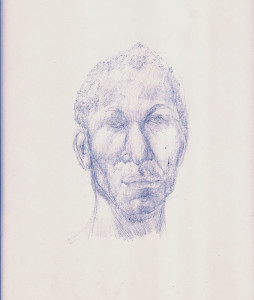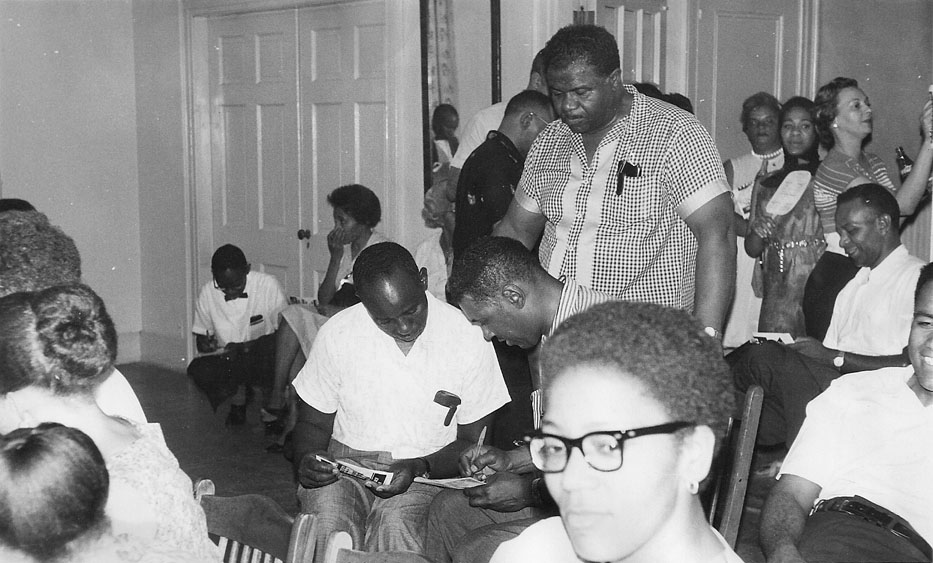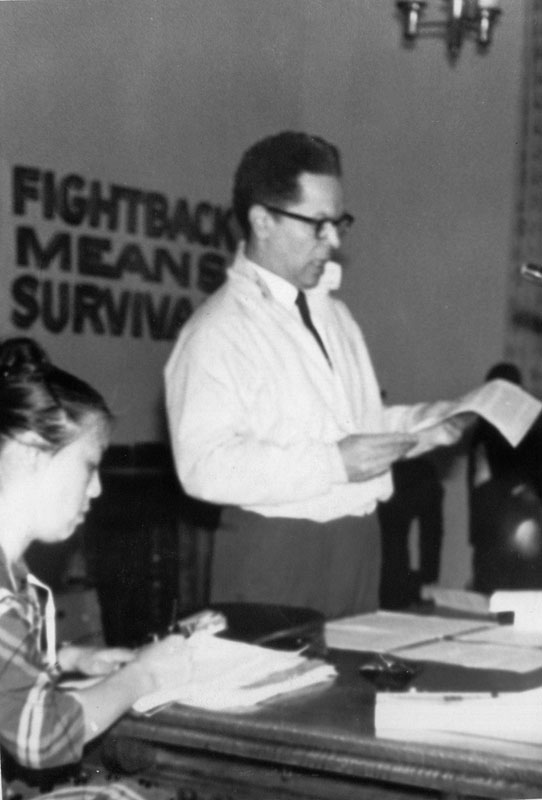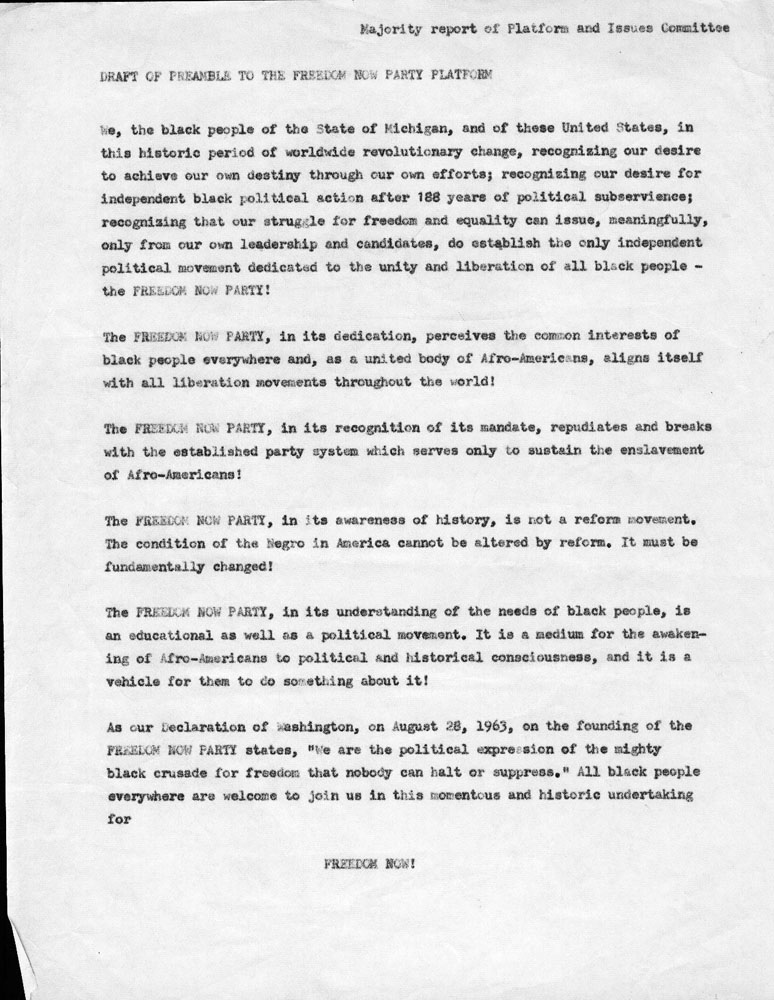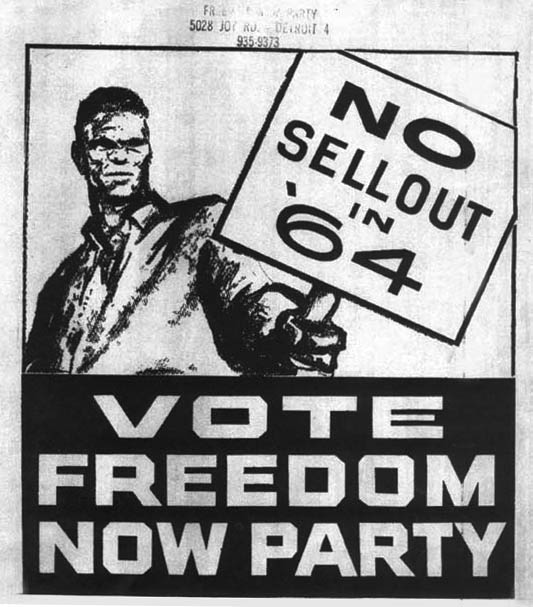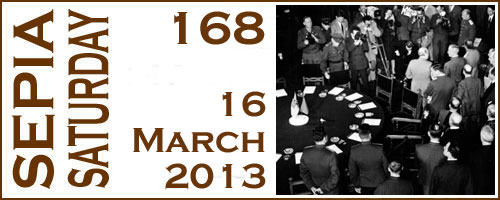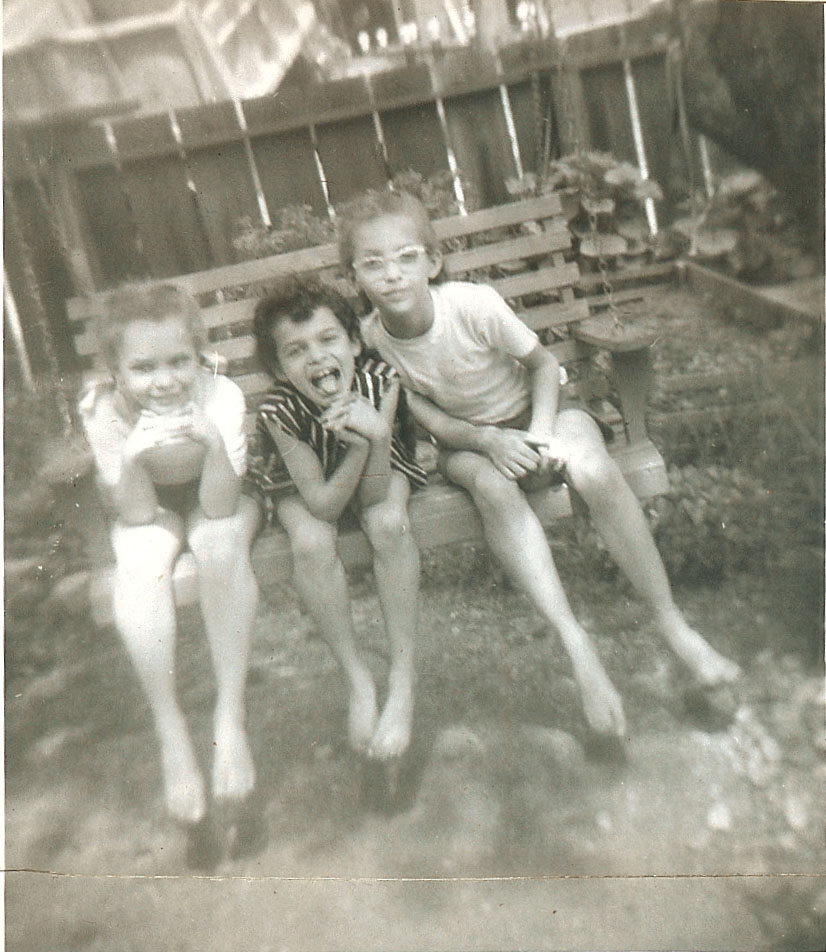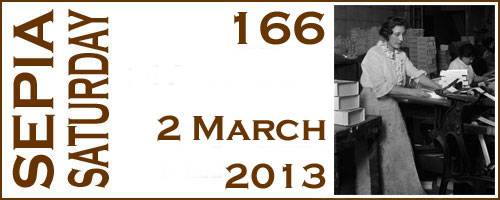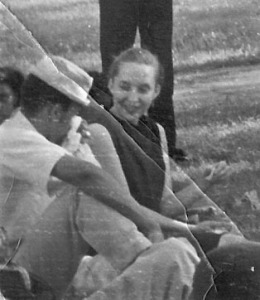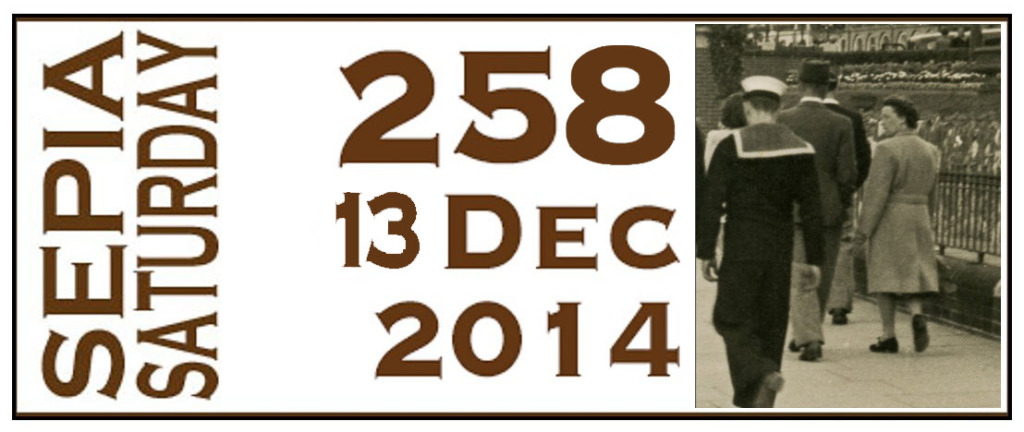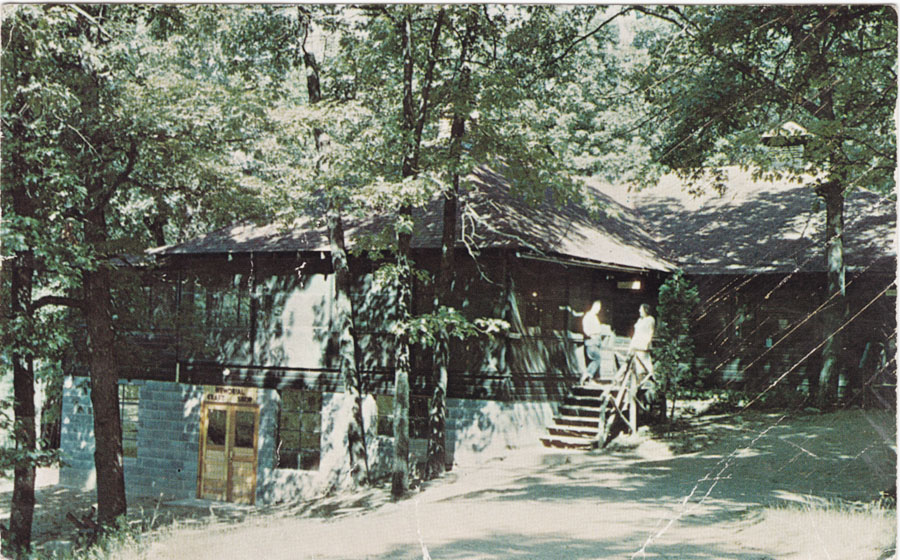 I am the first daughter, born during a thunderstorm in the middle of the night.
I am the first daughter, born during a thunderstorm in the middle of the night.
I am the one walking to school whistling when the woman turns around and says “A whistling girl and a crowing hen always come to a no good end.”
I am one of the cousins squashed into the back seat singing on the way to and from our grandparents.
I am the six year old sick with pneumonia, upstairs in bed for months.
I’m the 12 year old elementary school graduate, out of school early and throwing snowballs with my friends.
I’m the double promoted 7th grader without friends who knows how many minutes left in each school day.
I’m the high school student longing for escape.
I’m the girl standing on the sidelines at Youth Fellowship dances.
I’m 19 and hopelessly in love.
I am 20 with a broken heart.
I’m the printmaker using found zinc scraps for my pieces.
I’m 23, alone and in labor with my first child, in a large dark house, waiting.
I’m a woman, carrying, laboring, birthing and nursing.
I’m the city girl milking goats, chopping wood and plucking chickens.
I’m the 35 year old mother of 5 dancing around the kitchen with my young son.
I’m the 45 year old mother of 6 walking four fast miles around the lake, ignoring my aching achilles tendons.
I’m the granma with bad feet making my way around the track.
I’m the child and the woman moving from place to place.
I’m a woman who has been with this man forty eight years.
I’m a gardener without a garden, a water woman without water and a sewer who rarely sews.
I’m an artist and a writer and a teacher.
I’m a feeler trying to be invisible.
I’m the one the ancestors come through.
Tag Archives: #me
A Persistent Memory

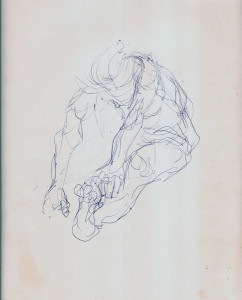 For several years after we moved to this house, a scene from my past would come to me every time I was getting ready to brush my teeth. I would see a couple that modeled for my life drawing class. he was white, short with longish, almost white, blond hair. She was black, brown skinned with an afro. We were at a small demonstration on campus. Their two daughters, in my memory they were about 8 and 6 with curly afros, coloring between their parents. The woman and I smile at each other. And then the scene is gone.
For several years after we moved to this house, a scene from my past would come to me every time I was getting ready to brush my teeth. I would see a couple that modeled for my life drawing class. he was white, short with longish, almost white, blond hair. She was black, brown skinned with an afro. We were at a small demonstration on campus. Their two daughters, in my memory they were about 8 and 6 with curly afros, coloring between their parents. The woman and I smile at each other. And then the scene is gone.
The Freedom Now Party 1964
Today’s post is about the Michigan Freedom Now Party. My photographs were taken during the first convention, which took place in Detroit in September 1964. It was held at Central Congregational Church, now the Shrine of the Black Madonna. To read an interview with Henry Cleage about organizing the party and what happened during the election, click this link – Freedom Now Party,.
On the far left, back of my sister’s head and the back of my head. Standing in the checked shirt is Oscar Hand. Behind Mr. Hand, in the white shirt, is Richard Henry (later Imari Obadele) Writing on the wall is Leontine Smith. Against the wall in the white dress is Annabelle Washington. I cannot name the others.


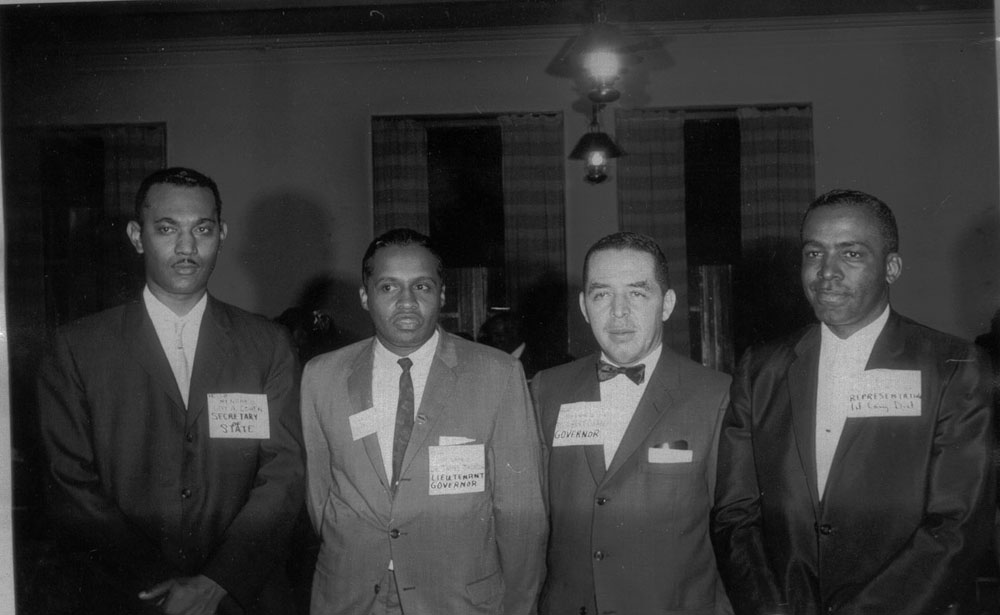
For more about my family and elections go to these posts: More From Elections of Yesteryear and Wordless Wednesday – Elections Past.

Three In A Swing
Moving Day Springfield to Detroit 1951, Revisited
Back in November of 2011 I wrote Moving – Springfield to Detroit 1951 for Sepia Saturday 102. I mentioned that I remembered the little girls in the photograph, but I couldn’t remember their names. Well, I found them!
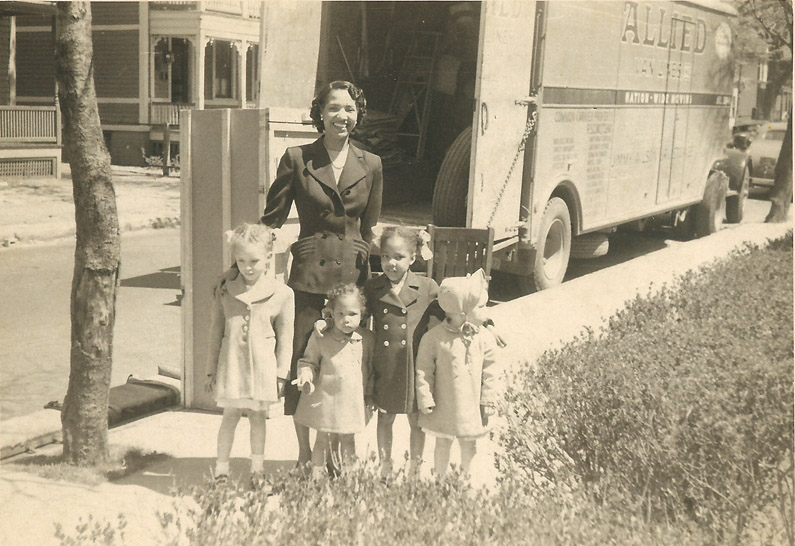

During February, I was working on a post about turtles I have owned, when I came across the photograph below.
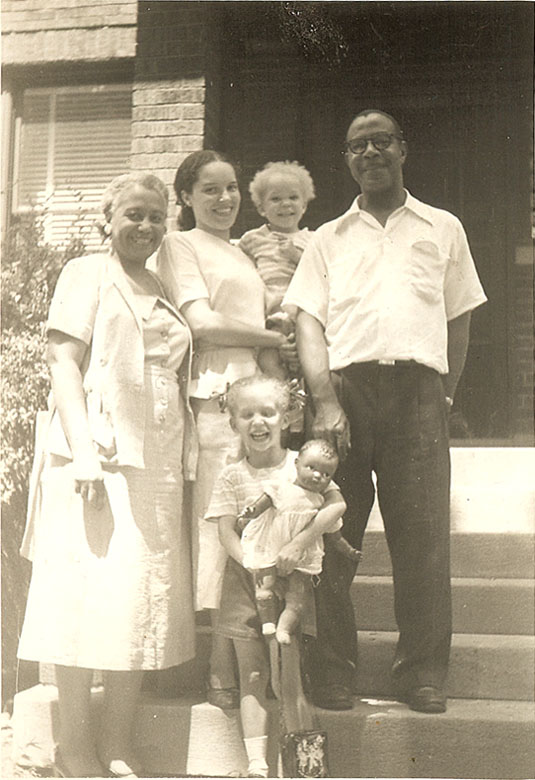
I recognized them as the Funns and realized that the other man’s name that I remembered from Springfield, “Lindsey”,must be the name of the father of the girls in the photographs. How could I find the last name? I decided to Google “Lindsey St. John’s Congregational Church, Springfield, MA”. The first item that came up gave me his last name, Johnson. I Googled “Lindsey Johnson, Springfield, MA” and came up with several articles. This was them! Sherrie was the oldest daughter, the one who poured milk in my dinner on that day so long ago. Below are some of the articles I found and some photographs of the Johnsons and also an article about Mr. Funn. Goggle and newspapers – it’s hard to beat them sometimes.
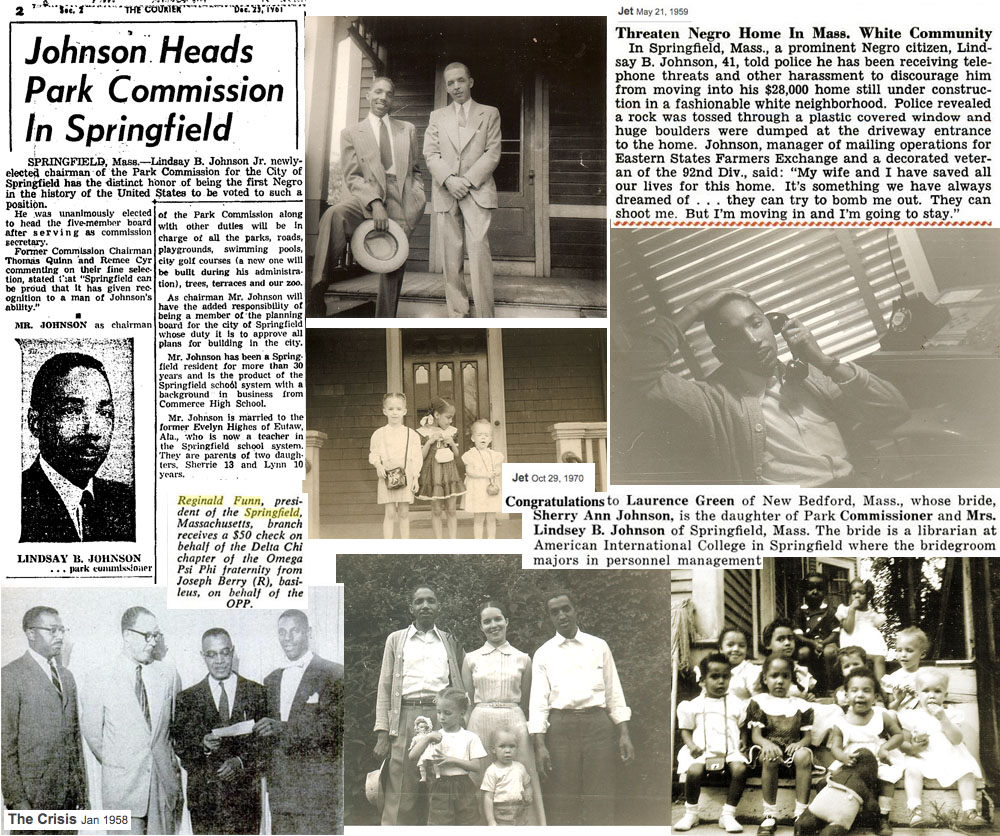
Association of Black Students – WSU 1968
This is the 28th and final post in the February Photo Collage Festival and the Family History Writing Challenge. Today I will write about this photograph which appeared in the Ebony Pictorial History of Black America, Vol. III. It was taken at the Association of Black Students Symposium at Wayne State University in Detroit, February of 1968.
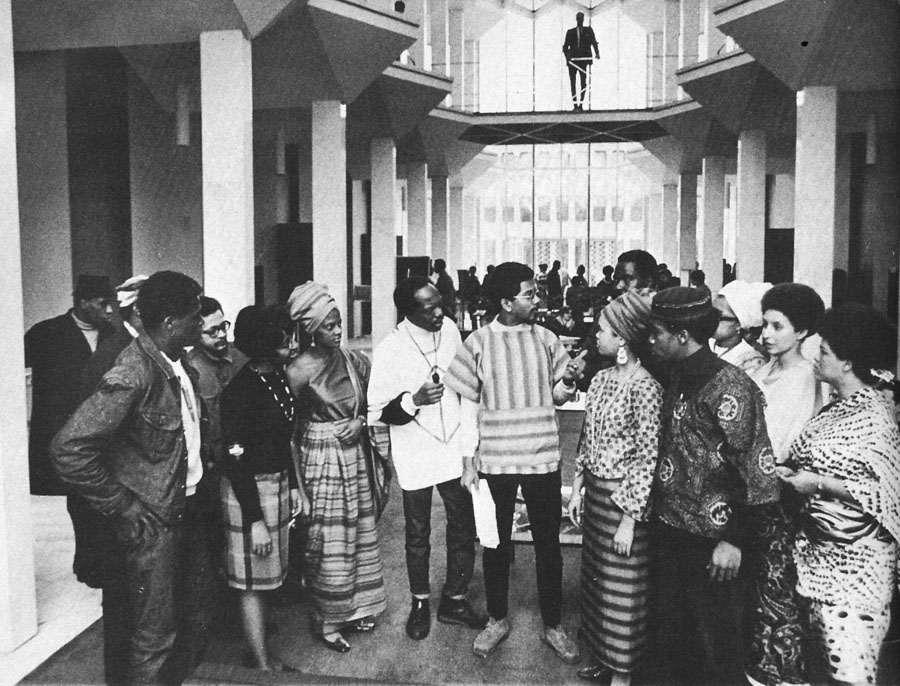
Photo from Ebony Pictorial History of Black America Vol. III Pg 142.
I remember when this photograph was taken. The photographer asked some of us to gather around Lonnie Peek and look interested. Lonnie is in the middle, wearing a striped dashiki. Back in February of 1968, nobody was selling authentic African print fabric in Detroit. We went and bought regular fabric, made our lapa wraps and head wraps with that. I made mine out of a green paisley print and the top was a thin green fabric that I folded over and sewed into a blouse without a pattern. Later, I tuned the skirt into a dress. By the next year, I was sewing garments out of African fabric at the sewing factory.
I didn’t really work with the Association of Black Students. I remember helping on some of the layouts for posters or brochures. I was using insta-type – letters on sheets that you rubbed onto the paper. It has been years and years since I have seen anyone here. Some are dead.
On the far left, in the background is Beverly Williamson. He did security duties for my father for several years. The man leaning in with glasses was Rufus Griffin who became a judge in Detroit. Brenda, with the stripped, draped skirt, later married Rufus. Next to her is Bell. He was a tailor and was framed by a drug dealer and spent time in prison. Then we have Lonnie Peek who is now a Baptist Minister. Cynthia Washington is wearing a striped lapa and polka dot blouse. She graduated from Wayne and returned to Mississippi. Behind her, you can just see the top of Homer Fox’s head. He became a lawyer and is now dead. Next to Cynthia is Nana Kwadwo Oluwale Akpan, then known as Gerald Simmons. He was a photographer, among other things. He died in Ghana several years ago. On the end is Kathy Gamble. She moved to New York and died there a few years ago. I am next to Kathy and right behind her, you can see part of my father’s head. He must have given a speech.
I don’t know who the man watching us from the balcony was.
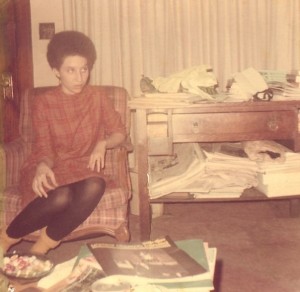
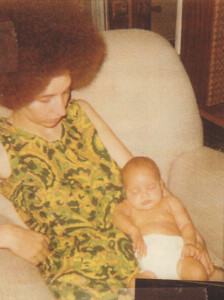
The Black Arts Convention – 1966
The photograph for today was taken during the Black Arts Convention in Detroit. It was 1966. I was 19 and Jim was 21. This was LaSalle Park, which was located a few blocks from my father’s church on Linwood. I don’t remember why this session was held at the park, but I do remember walking back to church where other closing activities were held.
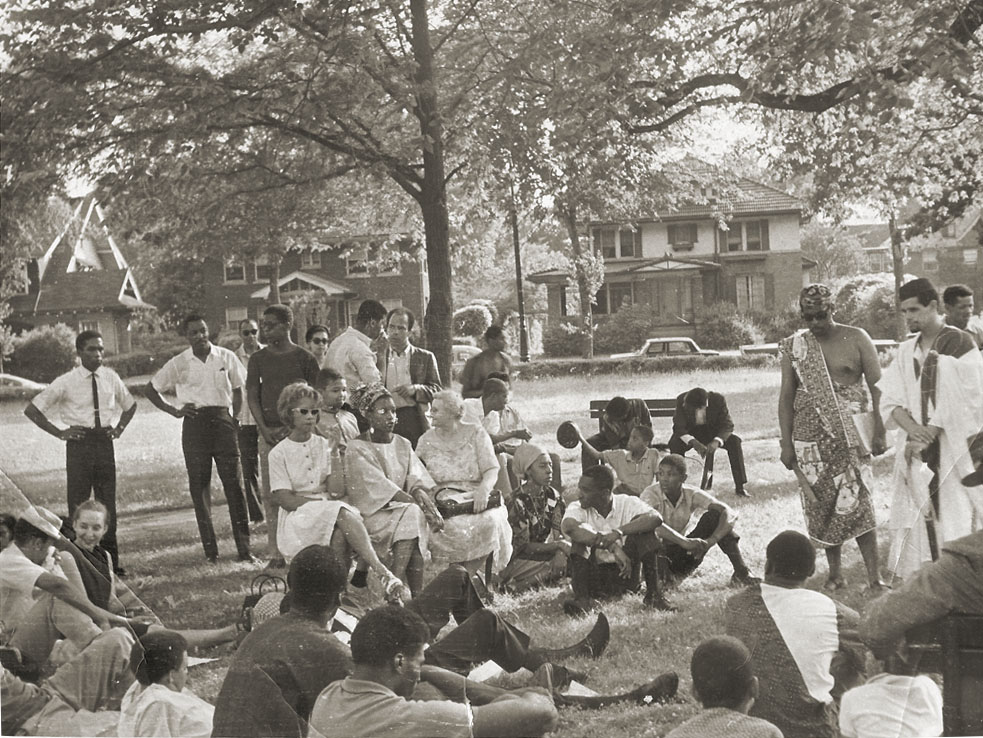
During that week, from Thursday through Sunday, The Black Arts Convention was held at Central United Church of Christ. There were workshops on the visual arts, theater, literature, religion and politics. There were arguments and sincere discussions. People from all over the country attended. I was going to write it all up, but I cut my finger last night while cooking dinner and typing is s-l-o-w today.
I am linking to this article, A Report On the Black Arts Convention, by Dudley Randall from The Negro Digest, Aug. 1966, on Google Books. It is a very good description of the convention.
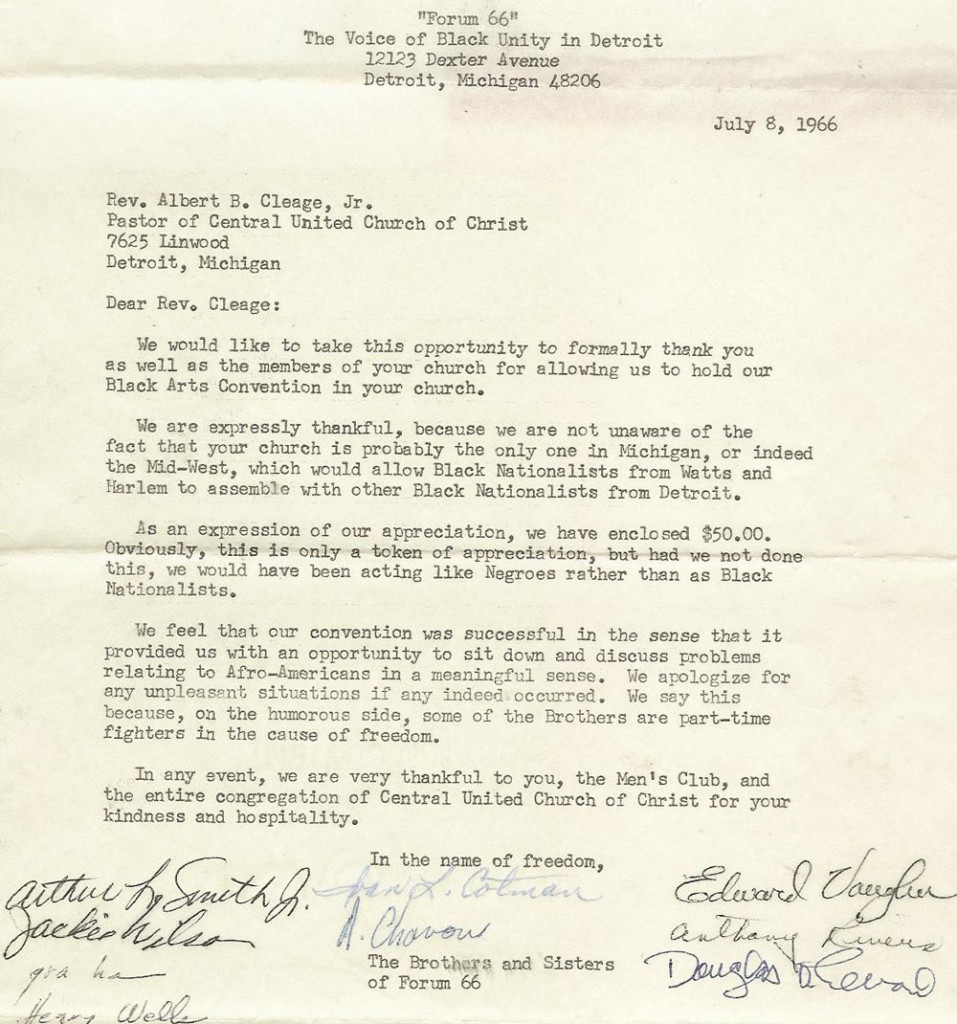
This is the 27th post in the February Photo Collage Festival and the Family History Writing Challenge. It’s hard to believe that tomorrow is the last day of both challenges and that I’ve posted every day.
Camp Talahi 1958 – 1962
This is the 26th post in the February Photo Collage Festival and the Family History Writing Challenge. The photograph for today is a page in a booklet advertising Camp Talahi. There I am reading quietly beneath a tree.
Camp Talahi was associated with the Congregational Church (later the United Church of Christ). It was located on 180 acres beside Lake Chenago, about an hour from Detroit.
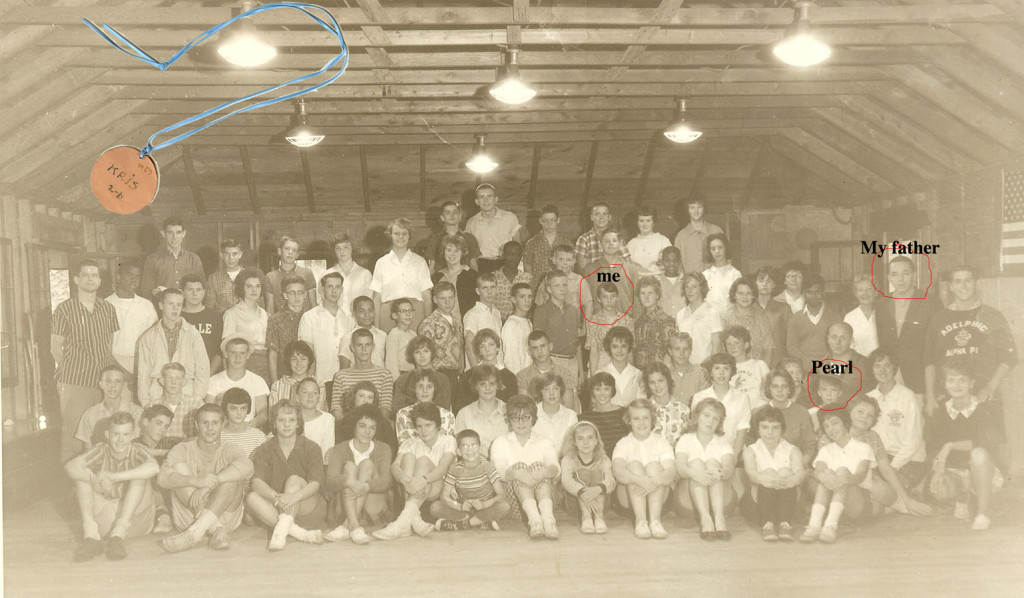 My father was a minister in the United Church of Christ at the time and sometimes he was there as a counselor at the same time that my sister and I were there. In the camp photo above, my father, my sister and I were all there the same week. I recognize some of the girls in the crowd as those who skipped activties and stayed in the cabin playing cards one year. I was a part of that group. At the top of the photo you can see one of the crafts we did. It’s a circle of leather with a piece of lanyard attached. I guess I wore it. The crafts were not Camp Talahi’s strong point. Lots of braided Lanyard.
My father was a minister in the United Church of Christ at the time and sometimes he was there as a counselor at the same time that my sister and I were there. In the camp photo above, my father, my sister and I were all there the same week. I recognize some of the girls in the crowd as those who skipped activties and stayed in the cabin playing cards one year. I was a part of that group. At the top of the photo you can see one of the crafts we did. It’s a circle of leather with a piece of lanyard attached. I guess I wore it. The crafts were not Camp Talahi’s strong point. Lots of braided Lanyard.
The craft workshop was on the lower level through those double doors. Upstairs was the screened porch where we took all meals. There was a large interior room with a stone fire place. The daily Bible study workshops were held here too. There was a show later in the week with all cabins contributing a skit or some talent.
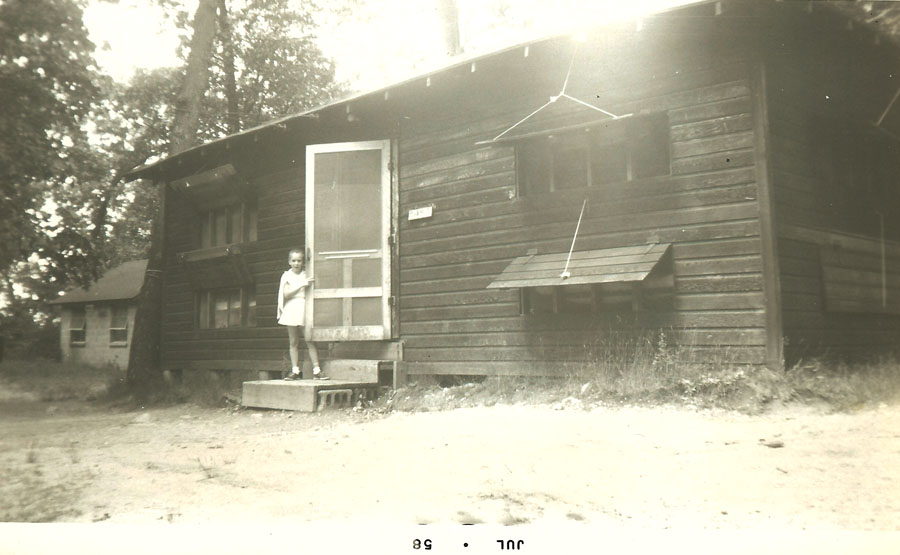
Camp sessions lasted a week. We arrived on Sunday afternoon and left on the following Saturday afternoon. There were 6 cabins for girls and others for the boys. Each cabin was divided in half. You entered through a door like the one Pearl is holding open, and you were either on side A or B. There were 4 0r 5 bunks on each side, plus a cot for the counselor. I always tried to get an upper bunk by the window. The windows were screened with shutters you controlled from inside with a rope. There was no glass. The toilets and sinks were in the cement block building to the left in the above photo. I don’t remember any showers.
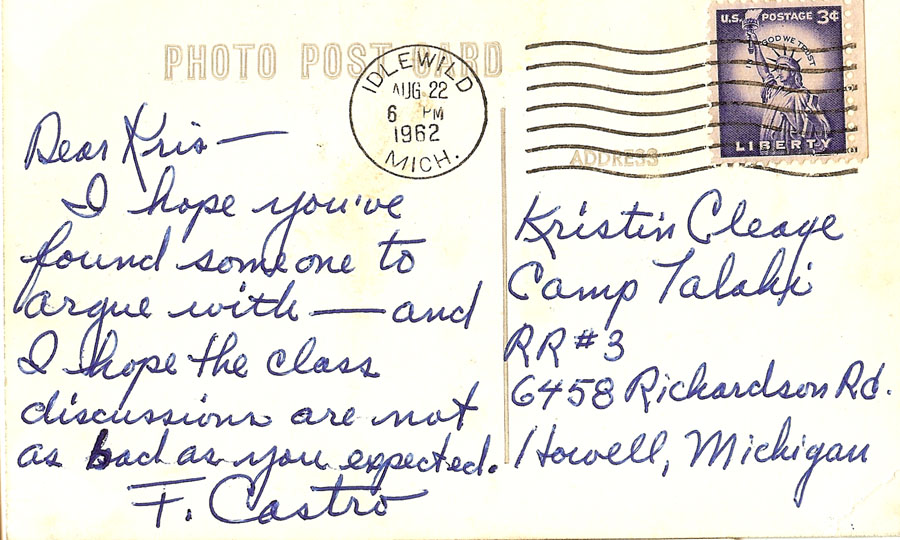 This is a postcard my father sent me in 1962. He had a strange sense of humor. The classes were just as bad as I thought they would be. They were usually about the Apostle Paul. Every evening there was a vespers service on a hill. We sang some camp songs. Somebody did a Bible reading. We had a quiet meditation.
This is a postcard my father sent me in 1962. He had a strange sense of humor. The classes were just as bad as I thought they would be. They were usually about the Apostle Paul. Every evening there was a vespers service on a hill. We sang some camp songs. Somebody did a Bible reading. We had a quiet meditation.
We never went camping or slept outside, although the boys did. We had one cookout when our cabin went to the prepared campsite and cooked a hamburger, potatoes and carrots in foil on a fire. We went on one walk in a piney woods once and I remember the wonderful smell.
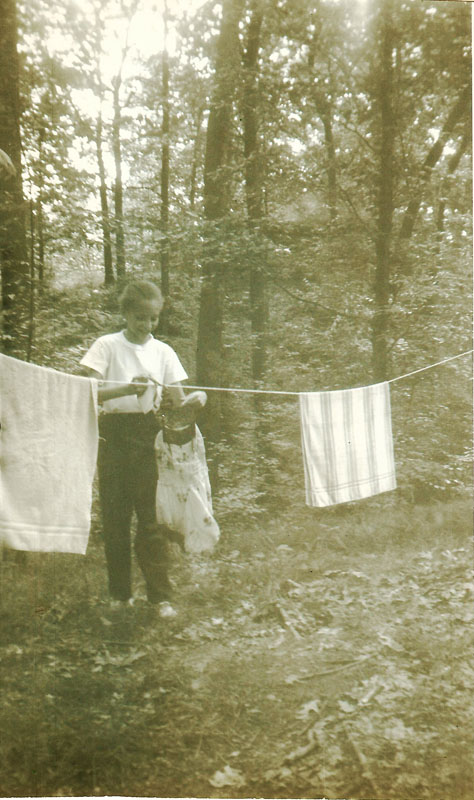
We went swimming once or twice a day. We had buddies and when the lifeguard blew the whistle, we had to hold hand up, together. We hung our towels and suits on a clothesline outside of the cabin. They hardly dried from use to use.
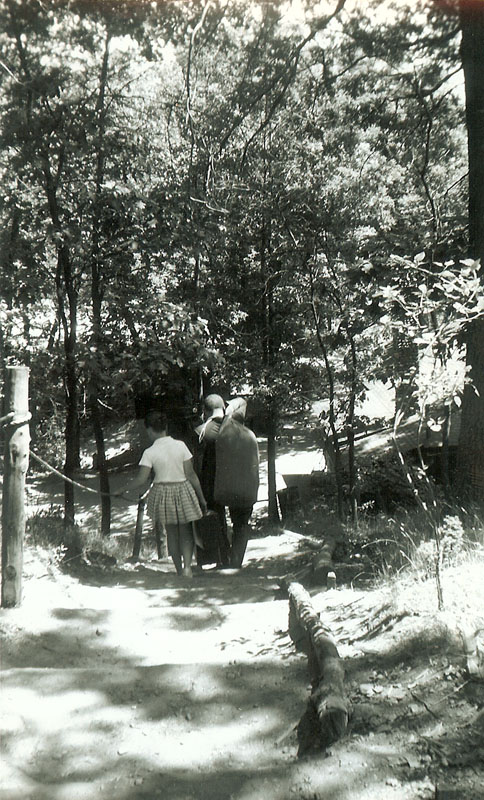
There were two black churches in the United Church of Christ in Michigan. Both were in Detroit. Ours was one and Plymouth was the other. Usually there were a few kids from our church. I don’t remember any from Plymouth. Sometimes there would be a lone black kid from a small town who attended a mostly white church.
The directorship of the camp rotated between the ministers in the denomination who were actively involved. Except for my father. He was never asked and was not included because he was black. As far as I know, there was no unpleasantness between my father and other staff or campers. He was quite popular with the campers. I never experienced any racism. Mainly, girls would ask “Why is your hair like that?” To which I answered, “Because that’s the way it grows”. As years passed, I asked why their hair was so straight. That just confused them.
Our Yearly Trip to the Zoo
This is the 25th post in the February Photo Collage Festival and the Family History Writing Challenge. The photograph for today is from the Graham family’s annual trip to the Detroit Zoo.
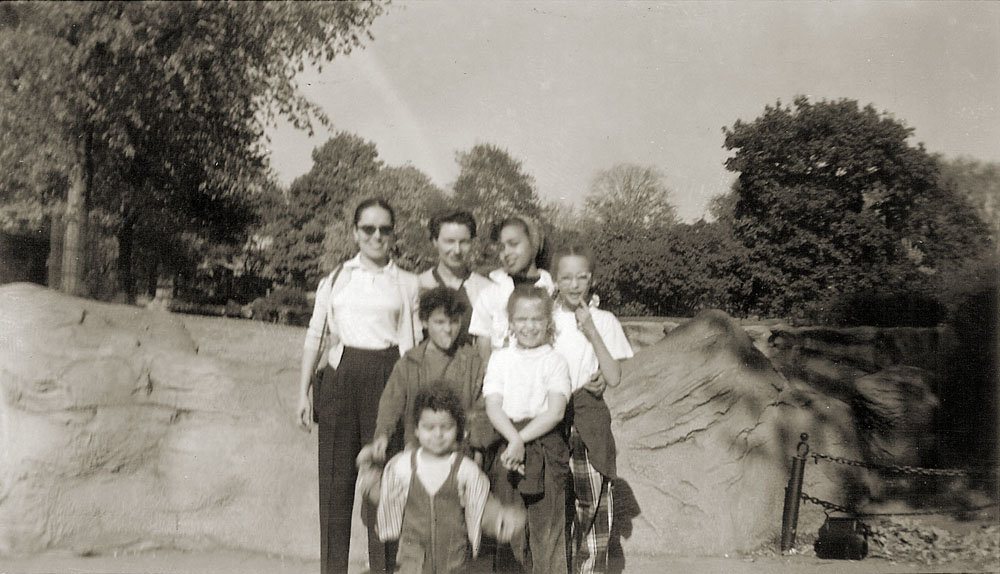
At the end of each summer my sister, cousins, mother, aunt and grandfather, Poppy, took a trip to the Detroit Zoo.
Sometimes the four older cousins spent the night before at our grandparents. We slept on a foldout cot in Poppy’s room. We went to bed first and I was always asleep by the time Poppy came to bed. That worked fine, unless I woke up in the middle of the night. He had the loudest snore and it was impossible to get back to sleep until he turned over and stopped snoring.
My grandmother, Nanny, never went with us. As I write this, I realize there are so many things I don’t remember. I suppose our mothers drove across town with Marilyn, to meet us in the morning. Did we take two cars – my grandfather’s and my mother’s? I don’t think so. I think we all smashed into one car, three adults in the front and 5 children in the back, with Marilyn sitting on someone’s lap. Nanny probably made us a picnic lunch to take. I can’t imagine buying hot dogs and french fries with Poppy along.
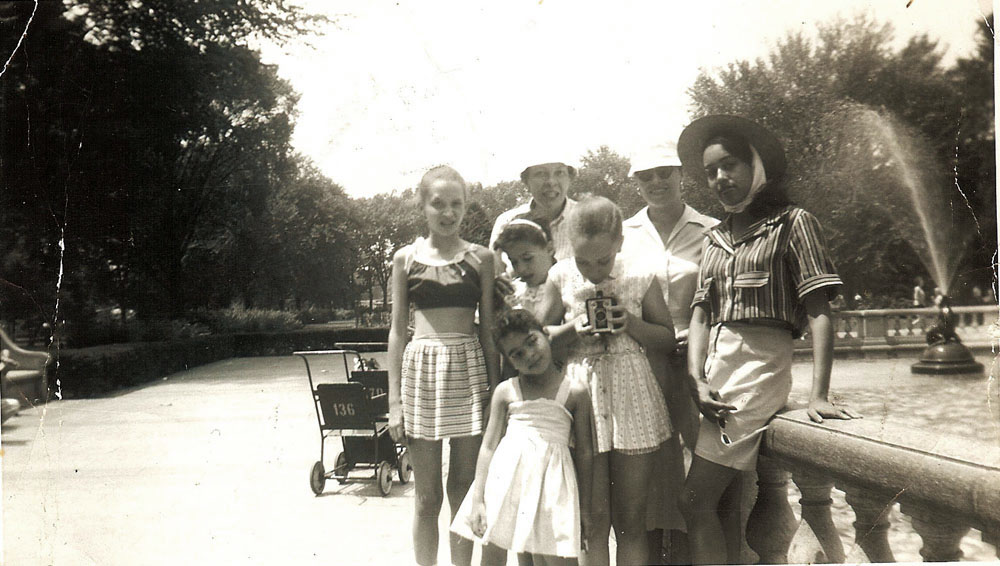
Looking at the photographs I can see that Dee Dee was way ahead of the rest of us in cool. Even in 1956, when she and I both wore our plaid slacks, hers fit and look good. Mine are baggy. Luckily, it doesn’t seem to bother me. That year Marilyn is so little and unaffected.

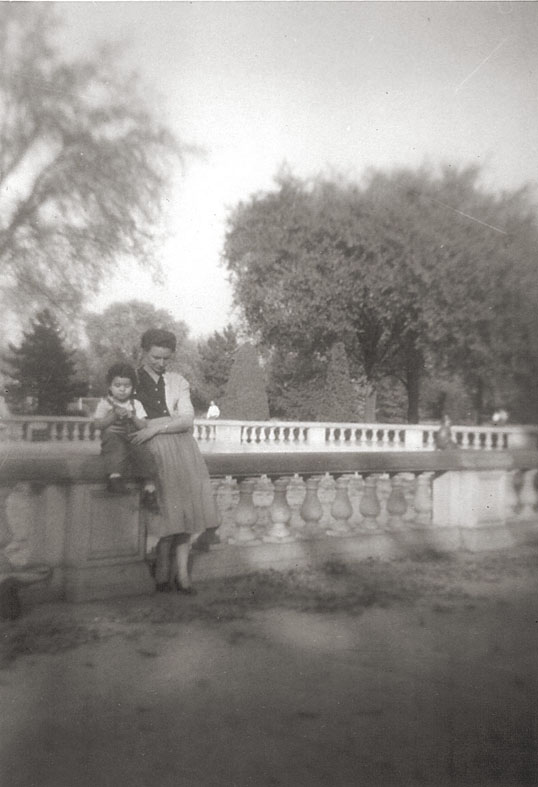
By 1959 Dee Dee is 16. I’m amazed she still accompanied us to the zoo. It must have been a very important part of our year. I was 13 and still not at all cool. That expression on my face is one I recognize from other photos through the years, unfortunately. I would say the sun is in my eyes but it doesn’t seem to be bothering anybody else. And why am I wearing that skimpy outfit? The hats that Connie and my mother are wearing were some my mother bought for Pearl and me. White sailor hats were the rage for awhile. Unfortunately, those were the cheap version and did not look like the popular ones. I don’t think we ever wore them. If I had, maybe I wouldn’t have been squinting at the camera. Little Marilyn looks a lot more blasé in 1959. I believe she is wearing one of the little sundresses my mother made for Pearl or me when we were that age. It was yellow with lace on top.
Reading The Newspaper – 1962
This is the 23rd post in the February Photo Collage Festival and the Family History Writing Challenge. The photograph for today is a corner of our living room at 5397 Oregon in Detroit. My mother and I are reading the newspaper. I was 16.
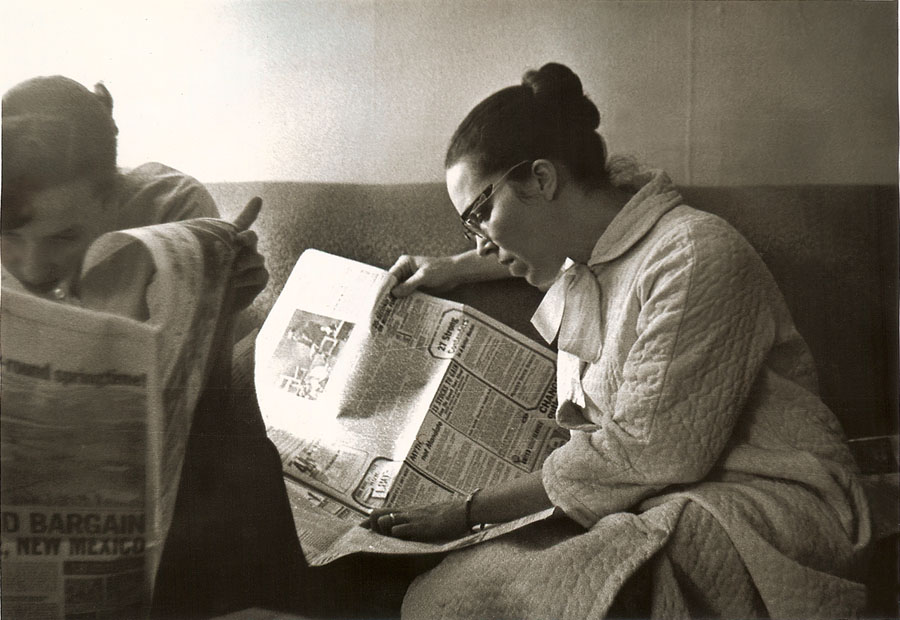 It is probably Sunday, because my mother is still in her bathrobe. And who reads the Saturday paper so avidly? I think the bathrobe was light pink, but I’m not sure. The couch was an old one that my mother brought from Sally and Ivy’s mother when we lived on Calvert. They moved out to Southfield, near the zoo, and bought new furniture. I remember going to visit once and hearing the lions roar.
It is probably Sunday, because my mother is still in her bathrobe. And who reads the Saturday paper so avidly? I think the bathrobe was light pink, but I’m not sure. The couch was an old one that my mother brought from Sally and Ivy’s mother when we lived on Calvert. They moved out to Southfield, near the zoo, and bought new furniture. I remember going to visit once and hearing the lions roar.
The couch was old. My mother had a slip cover made. It was blue with a blue design. I patched it once, in a fit of fix-it-up. It has been a long time since I have read a newspaper offline. I wonder what we were reading about.
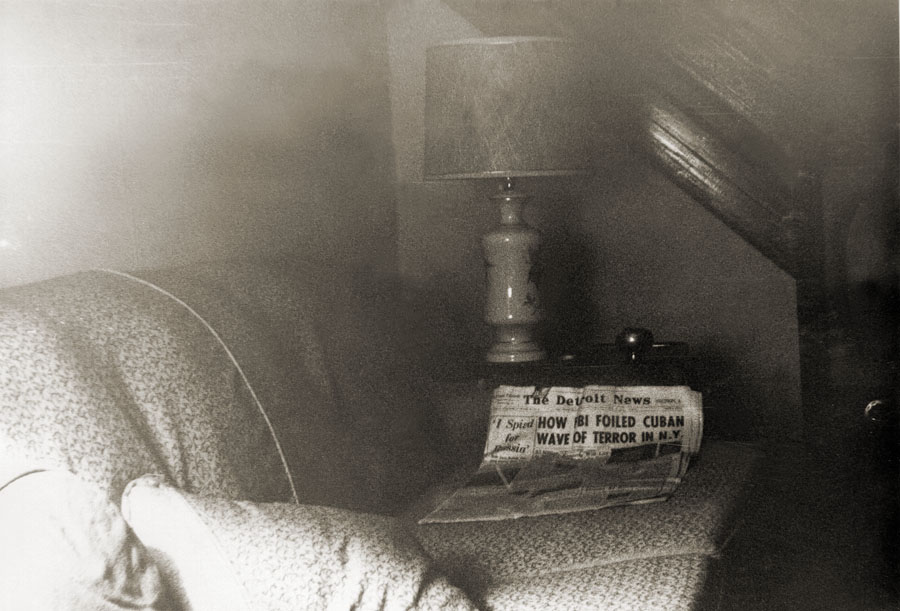
There was an end table with a lamp and a brass ash tray. Both my mother and Henry smoked. The table had a fake leather top and a big drawer. One of my daughters has that table now. The lamp was white with red flowers and green leaves painted on it. There were gold lines at the top and base. The old television, in a wood cabinet ,was still working. Later it died and for awhile there was a smaller TV, that worked, sitting on top of it.
The walls were beige. When we moved in, they were covered with wall paper. As soon as she could afford it, my mother had Mrs. Bruce’s brother come and paint it a clean, beige color. There is no art work above the couch in this photograph. When I graduated from high school and began studying art at Wayne State University, my mother would tack one of my drawings up on the wall. Later on she had me frame them for her, badly. I never could cut the mats right. You can’t see the rug here but it was a faded wine colored pattern. It was wall to wall and never replaced while we lived there.
